It was one of those moments etched in time, I was in a sleepy area of the Mekong River known as Four Thousand Islands. It has the quaintness of a podunk resort town –thanks to putting speed boats–but also the flavor of Laos, from the wandering monks, barefoot kids, and an abundance of Lao beer. My hotel room was a wooden hut without windows as the sun can be a bit intense on this side of the world. Yet the WiFi was as good as any coffee shop in Chicago. That’s where I was when I got the call from my school director.
“How about extending your holiday for a few more days. That virus in Wuhan is causing a bit of a problem.”
Two Years Later…
I–like everyone else–thought the world would be spinning by now, but no. We are right back where we started, well sort of. I’m on the Mekong again, but this time in China, not Laos, in Xishuangbanna.
Xishuangbanna is where your car can hit an elephant at night instead of a deer and where the best tea in the world is grown. Last June, a group of rowdy elephants from this area went on a road trip and ended up in Kunming. You might have seen it on the news.
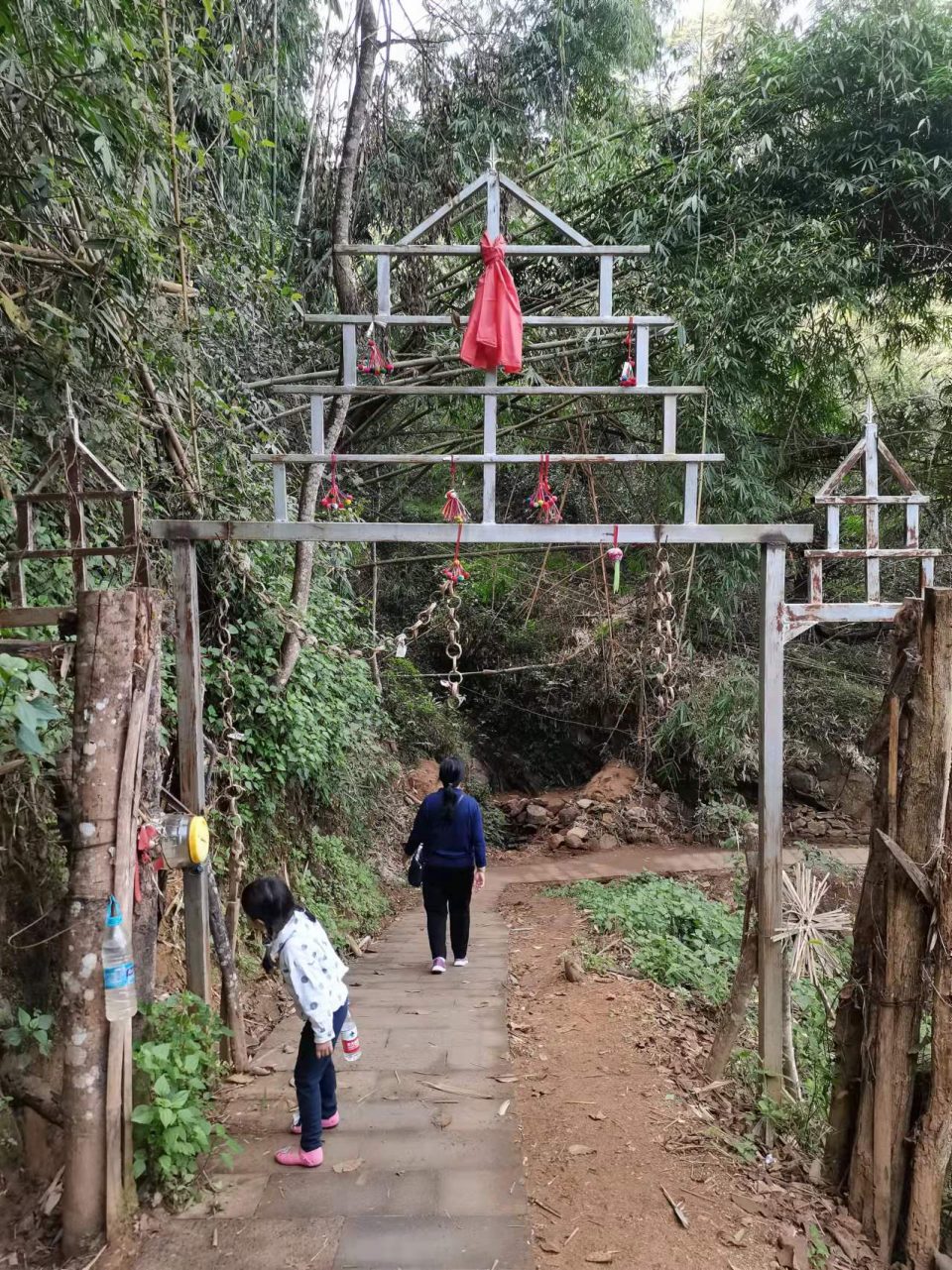
The new speed train from Kunming makes the trip to Xishuangbanna faster than what it takes to find your luggage at the airport. I was swooped away from the train station by the owner of the homestay to take a quick hike up a tea mountain with her daughter. Not a Lipton mountain but Pu’er tea. This stuff is fermented and pricey and is on the top of the tea food chain. Imagine the tea version of the Copi Luwak coffee that’s made from butt beans. Strong and uh, not for everyone.
Pu’er tea has a very very earthy taste, like shitake mushrooms or boiled socks.
I didn’t see any elephants on the tea mountain. I guess they don’t like Pu’er tea either. I did see a pig or zhū 猪, who wasn’t saying at a posh homestay.
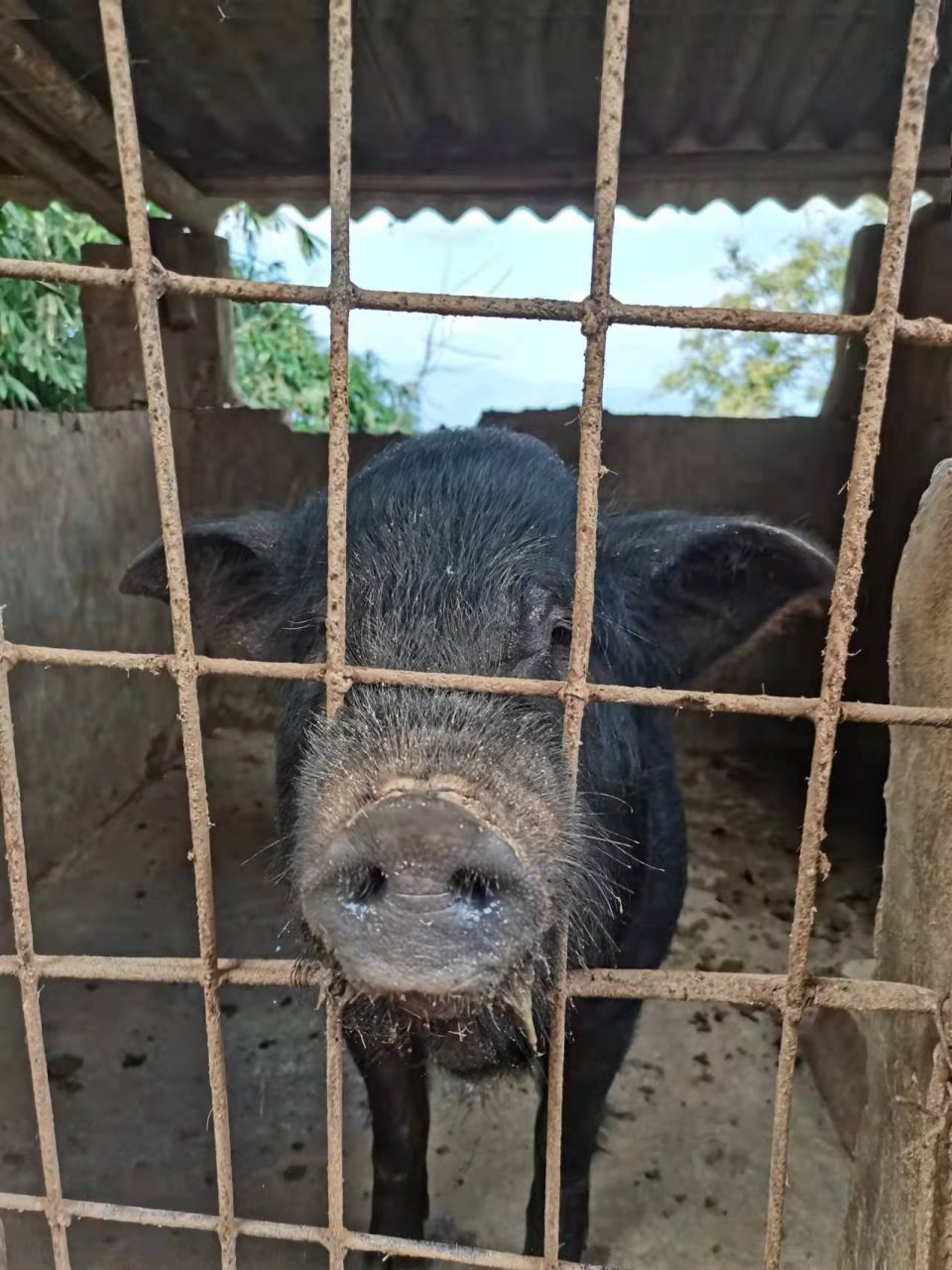
Plus a tabby cat that looks a lot like my dad’s old cat, Fang. The bushy trees below are tea plants.
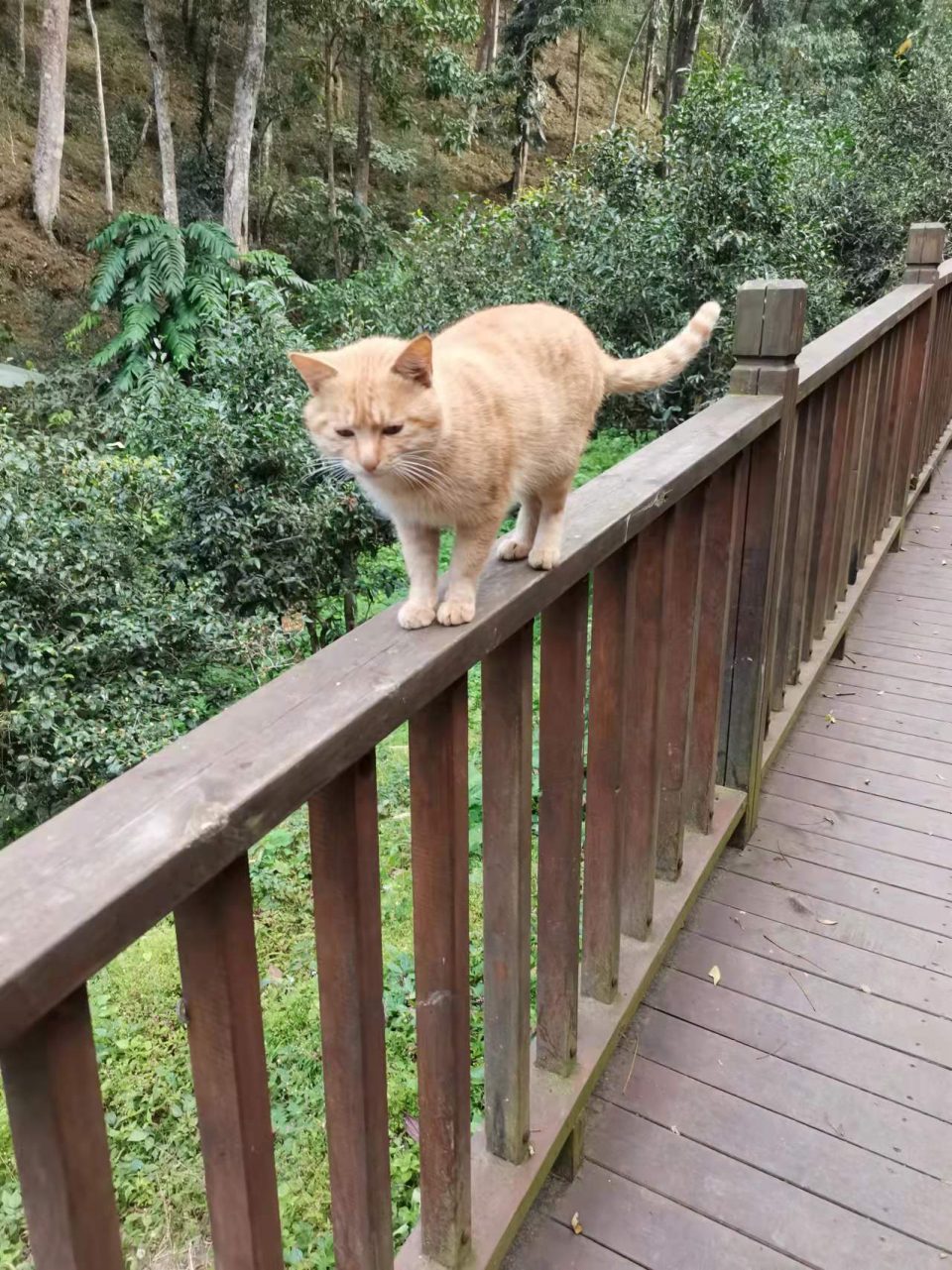
A small shrine was at the beginning of the path on this tea mountain. Guests stick crinkled yuan in the yellow plastic jar or tie money offerings to the bamboo chains.
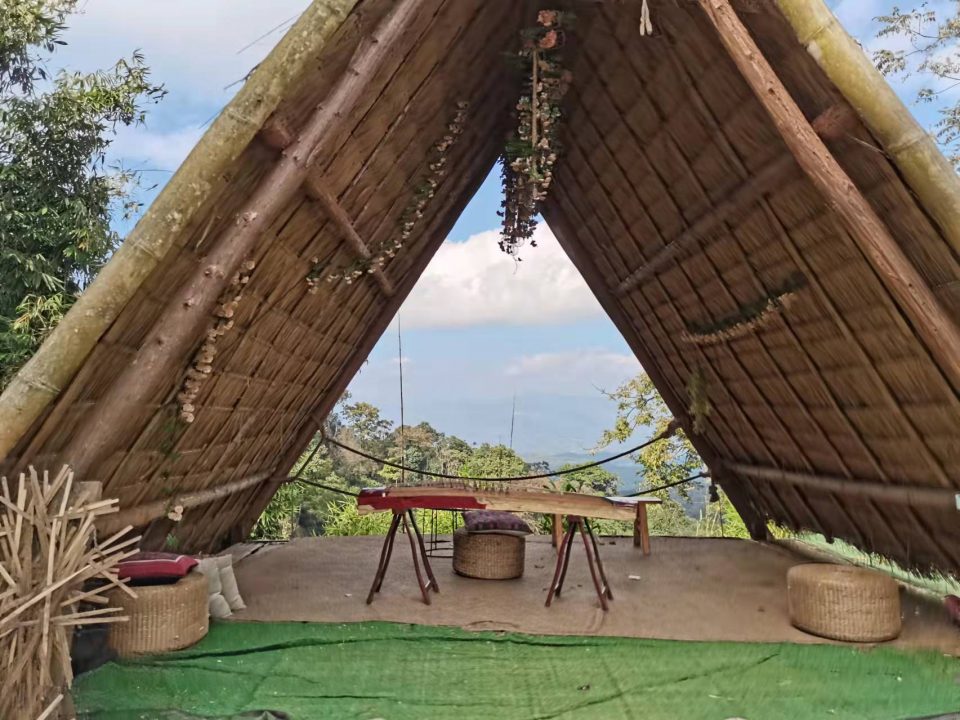
The view was as stunning. Sorry, no entertainment today.
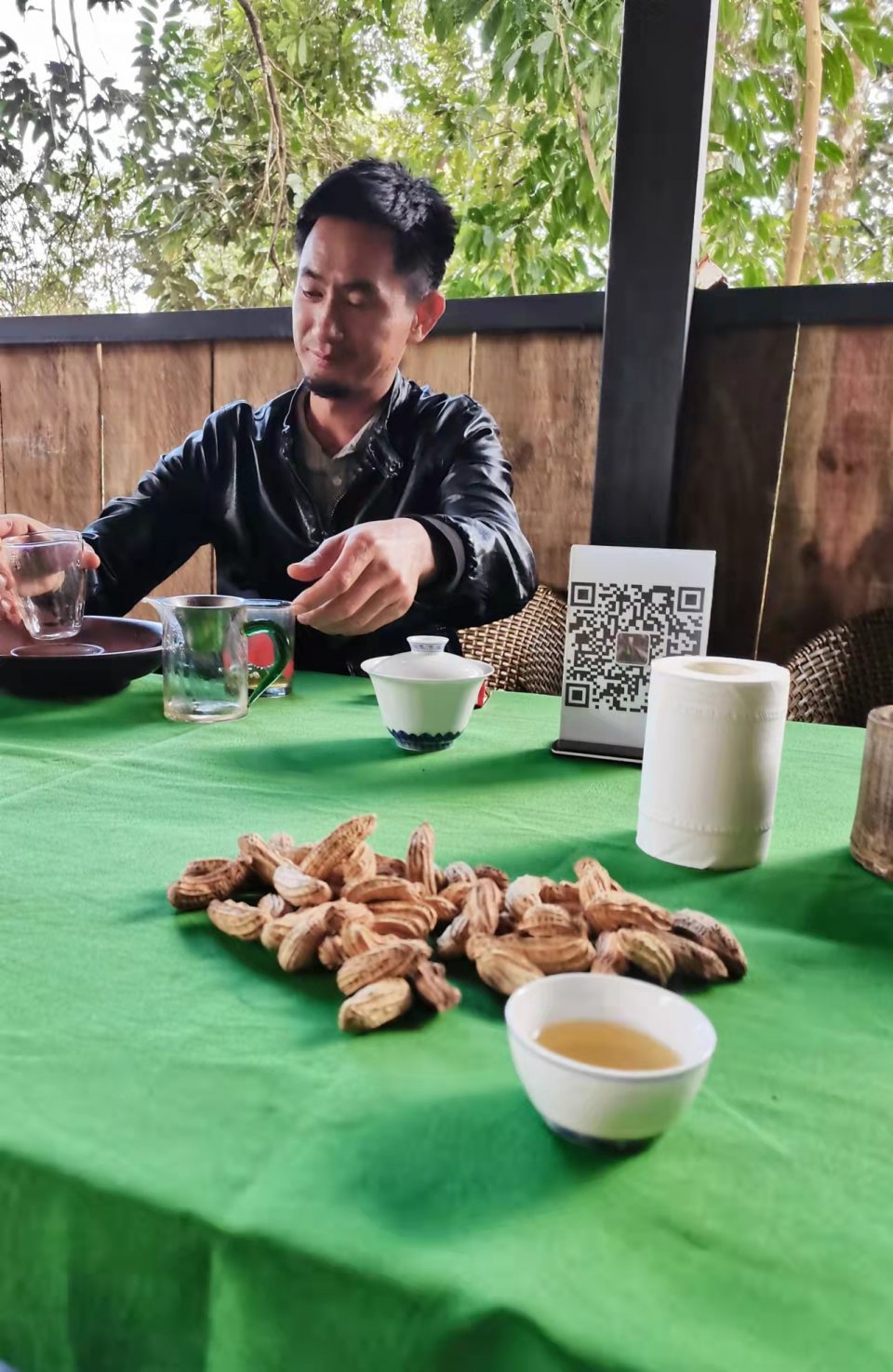
Tea trees were marked with QR codes. You could scan a code to contact the owner or learn more about the leaves. You could sample the tea with a few peanuts. What were you expecting…scones with lemon curd?
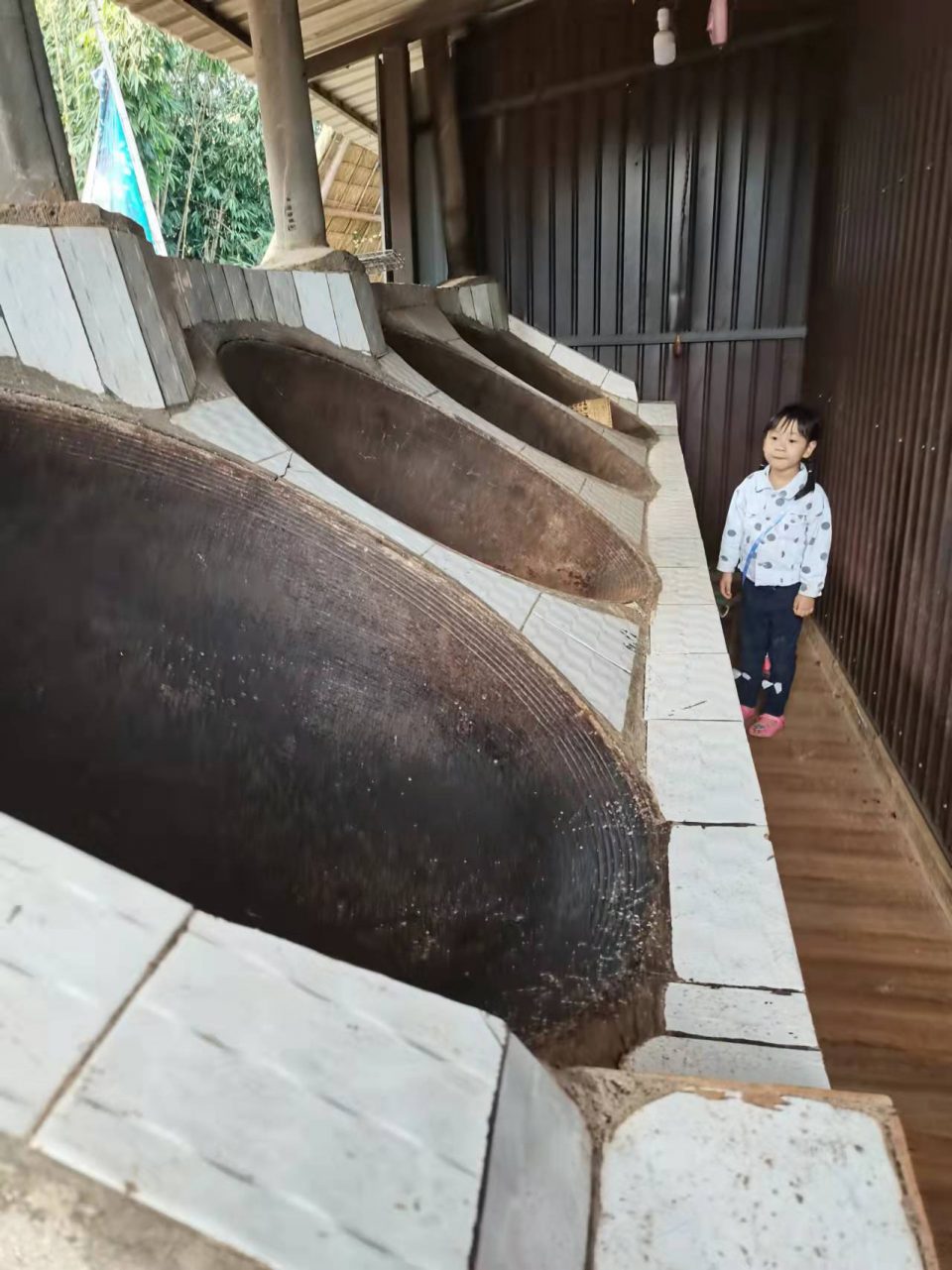
The fresh tea leaves are fired in huge wok-like bowls in the mountains before sun-drying. After a few weeks of drying, your tea will be shipped to your home.
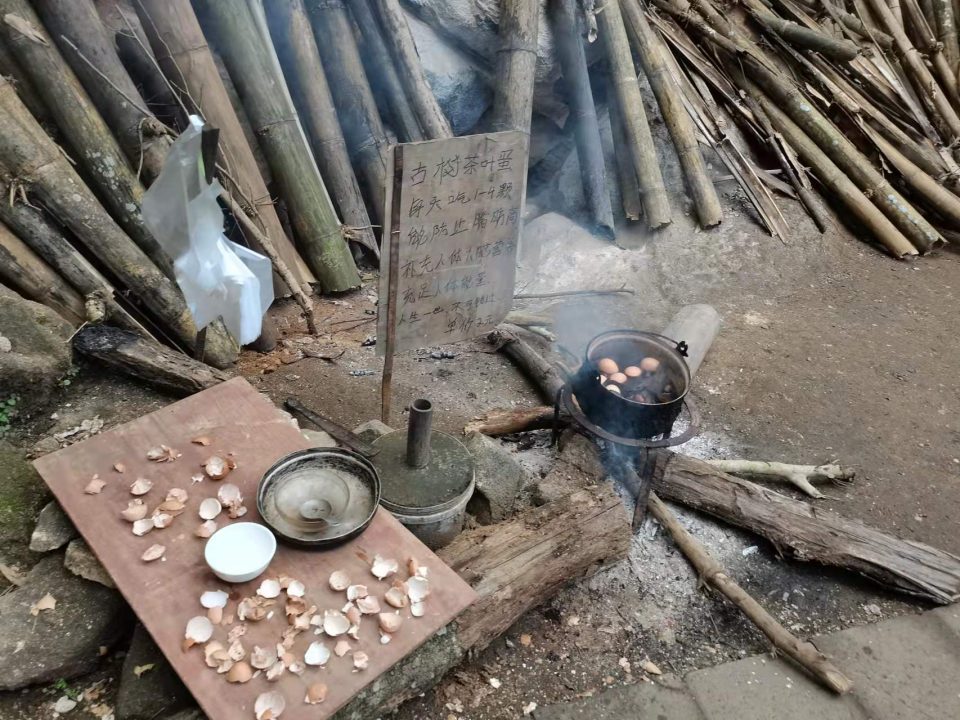
Tea-soaked eggs are a local treat. You can see a few boiling in a pot. You get your caffeine and cholesterol in one delicious bite!
After I left tea mountain, I headed to my hotel room where I had to show my health codes and put my mask back on. I sat in my room, which came complete with a 48-inch flat-screen TV and clawfoot bathtub –amenities that would hopefully me from complaining about the all-night bar noise –and devoured the book, Kai’s Covid Diary. Kai, a Canadian writer who lives on the Yangzte River, gave me a copy to review. With each date and entree, I thought about where I was in 2020. First in Four Thousand Islands, then Vientiane where online teaching began, then Kuala Lumpur waiting for the borders to open with other teachers, then back to Laos to drink beers on a rooftop with a dropout monk, and finally, the mad dash to America.
Fourteen nose swabs later–and let me warn you that your next swab will jiggle your frontal lobe as the Delta virus loves hanging in nasal cavities — we are all still wondering when it will be over, when we’ll be on the other side of Covid.
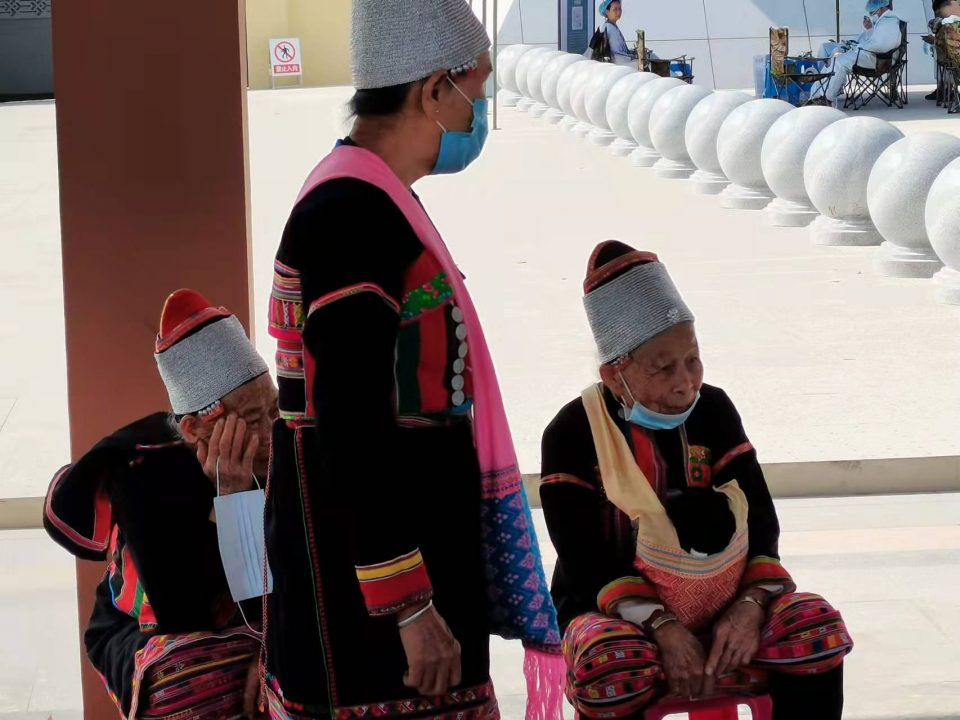
Maybe the same time next year.
Photo: Dai Minority women waiting at the Xishuangbanna train station
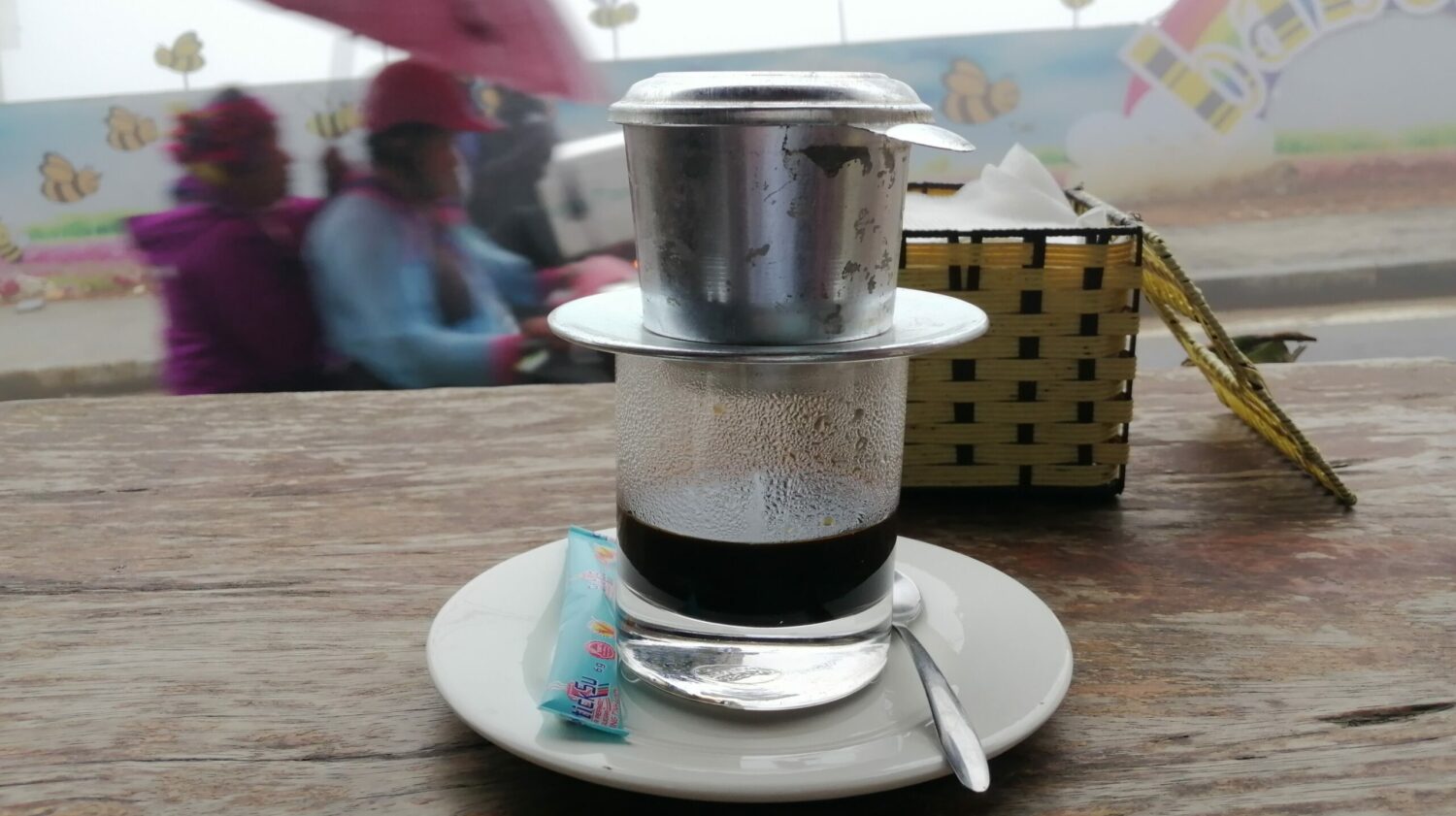
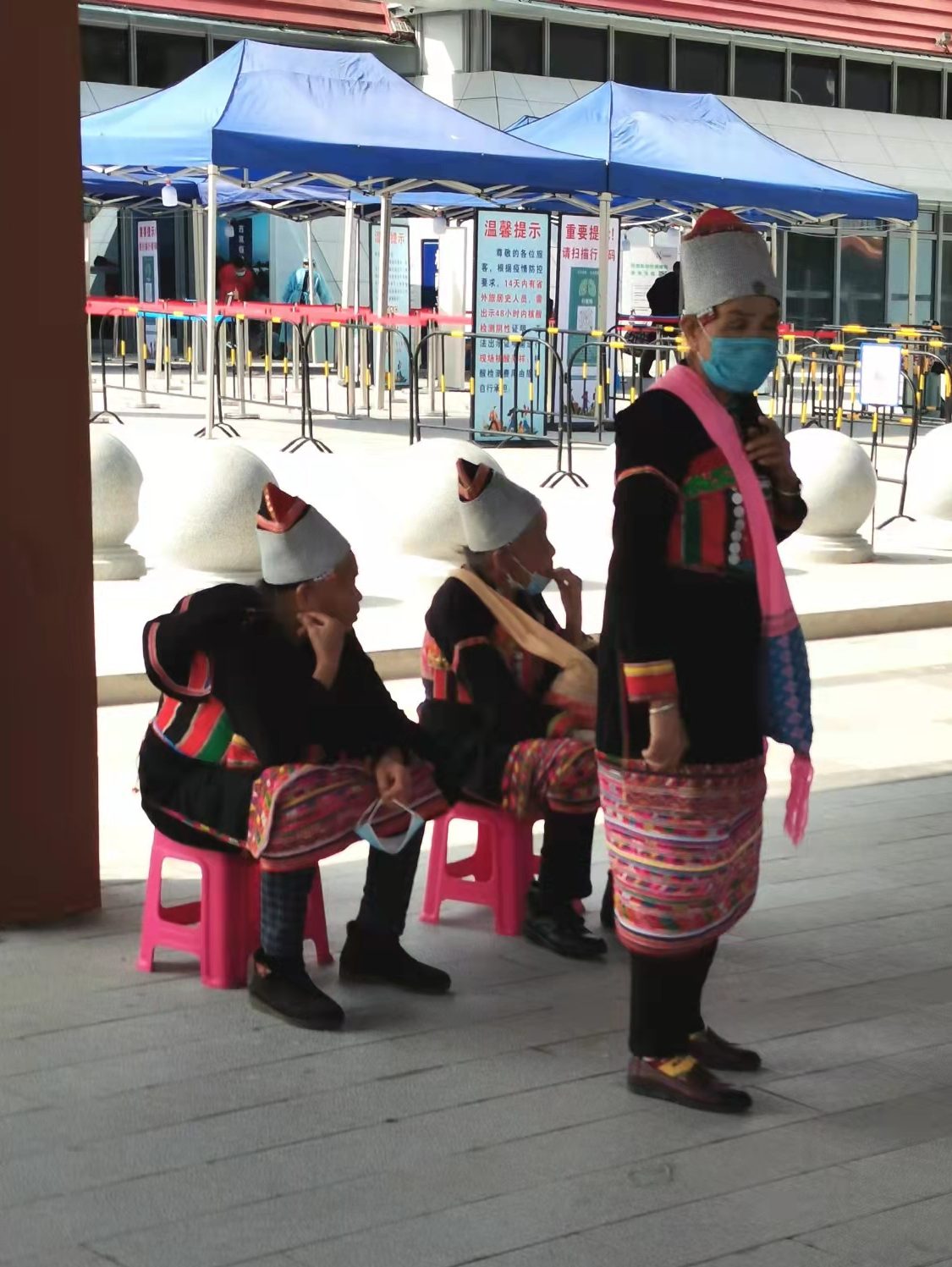
2 thoughts on “Xishuangbanna: The Other Side”